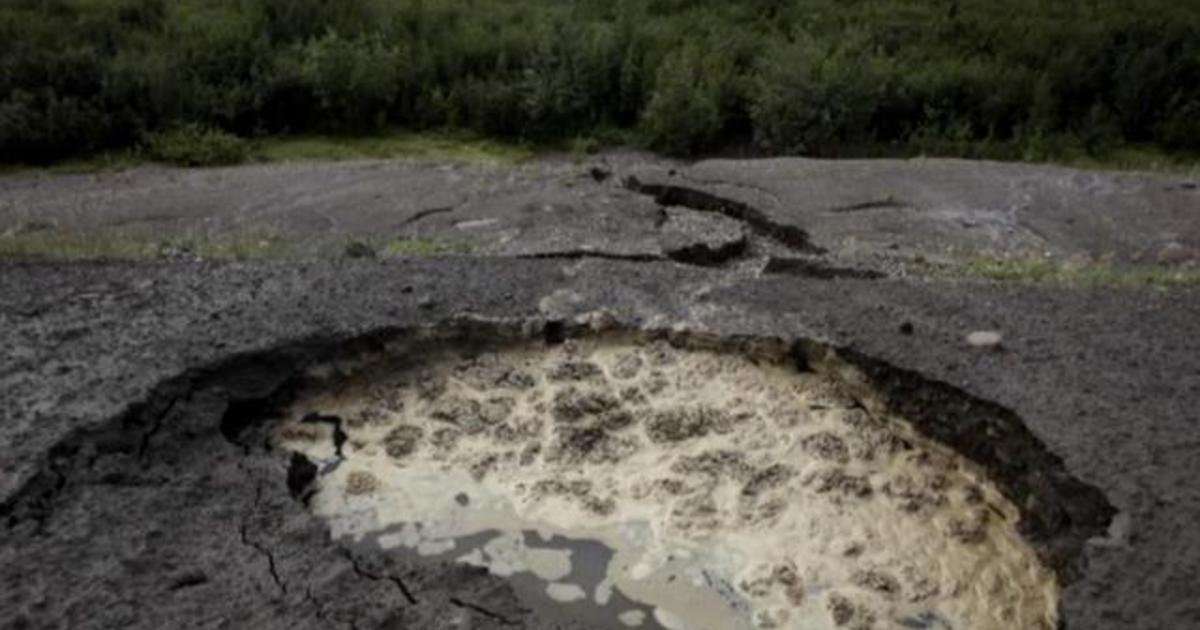When the mercury's rising in your thermometer, it may also be rising in the ocean.
According to a new study published Feb. 5 in the journal Geophysical Research Letters, there may be more than 15 million gallons (58 million liters) of mercury buried in the permafrost of the Northern Hemisphere — roughly twice as much mercury as can be found in the rest of Earth's soils, ocean and atmosphere combined. And if global temperatures continue to rise, all that mercury could come pouring out.
In geology, permafrost is defined as any soil that has been frozen for more than two years. In the Northern Hemisphere, permafrost accounts for about 8.8 million square miles (22.79 million square kilometers) of land — or roughly 24 percent of exposed Earth, according to the National Snow and Ice Data Center. Over time, naturally occurring compounds in the atmosphere, such as mercury and carbon dioxide, can bind with organic material in the soil and be frozen into permafrost, potentially remaining trapped underground for thousands of years before it thaws, the new paper said. [5 Deadly Diseases Emerging From Global Warming]
In the study, researchers drilled 13 permafrost soil cores from various sites in Alaska between 2004 and 2012. Then, they measured the total amounts of mercury and carbon in each sample, which proved consistent with thousands of other soil cores taken from other sites around the world, the paper said. Using the mercury contents of their 13 cores as a springboard, the researchers estimated the total amount of mercury sealed away below North American permafrost to be roughly 793 gigagrams — or more than 15 million gallons.
"There would be no environmental problem if everything remained frozen, but we know the Earth is getting warmer," study author Paul Schuster, a hydrologist at the U.S. Geological Survey in Boulder, Colorado, said in a statement. "This discovery is a game-changer."
Researchers have already observed climate-change-induced permafrost thawing, and there is likely more on the way: According to a 2013 study, the Northern Hemisphere will lose anywhere from 30 to 99 percent of its permafrost by 2100, assuming current human greenhouse-gas emissions continue unabated.
Previous studies have attempted to account for the billions of tons of carbon dioxide, methane and even "zombie pathogens" that could be loosed into the air and the oceans by melting permafrost. The environmental impact of a large-scale mercury leak, however, remains an unpredictable problem.
One major concern is that this trapped mercury could seep into nearby waterways and transform into methylmercury, a toxin that can cause motor impairment and birth defects in animals, Edda Mutter, science director for the Yukon River Inter-Tribal Watershed Council, said in a statement. Such contamination could travel swiftly up the food chain from microorganisms to humans, said Mutter, who was not involved in the new study.
"Rural communities in Alaska and other northern areas have a subsistence lifestyle, making them vulnerable to methylmercury contaminating their food supply," Mutter added.
The researchers are currently working on a follow-up study modeling the release of permafrost due to climate change, according to the statement.

Fallacy_Spotted on February 9th, 2018 at 06:55 UTC »
Key portion of the article here: "Using the mercury contents of their 13 cores as a springboard, the researchers estimated the total amount of mercury sealed away below North American permafrost to be ... more than 15 million gallons."
Earlier in the article they state "Northern Hemisphere" but quote North America in the this defining bit. The whole article is a mess really. They do not distinguish between claims made in the paper and claims made by the article writer based on what he found in the paper.
The researchers extrapolated from just 13 core samples the mercury content of the entirety of the arctic permafrost. If that sounds stupid that is because it is. Throw this article in the trash bin. The researchers should have just published the test results and core sample locations so they can be compared against future core samples. Only then can any usable information be extrapolated.
GnuGnome on February 9th, 2018 at 06:38 UTC »
Eli5 how the mercury got there?
Robonglious on February 9th, 2018 at 02:35 UTC »
How significant is this considering how big the ocean is?
Also, wouldn't it sink?
Methane is the big problem right?